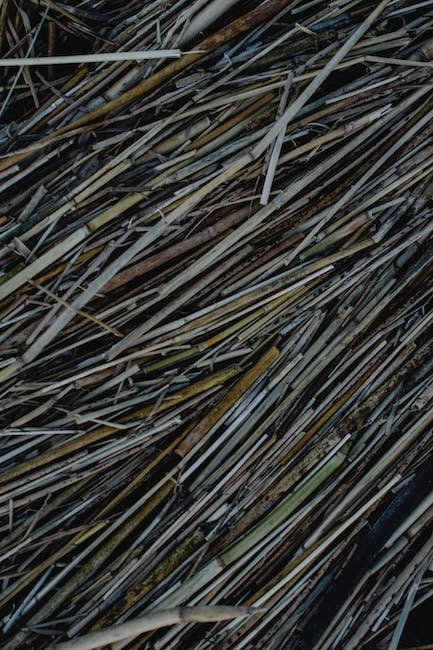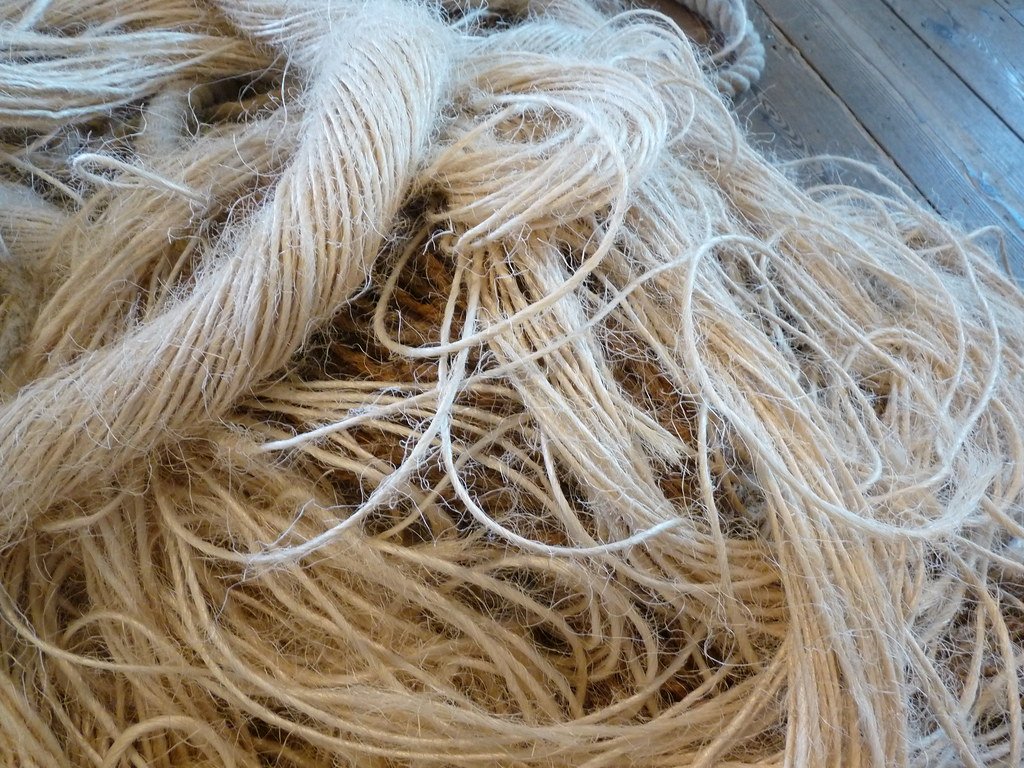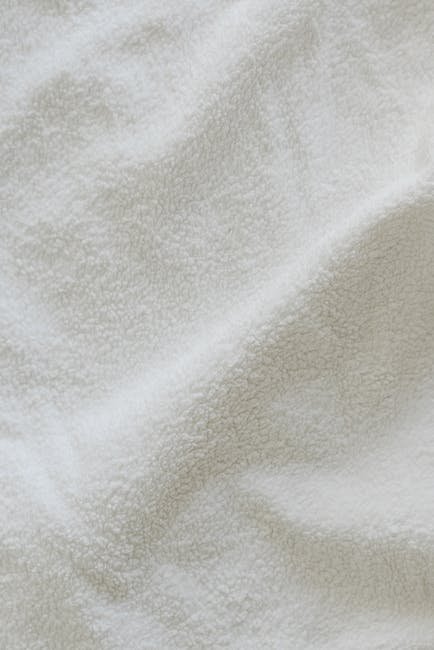Beneath the soft flutter of their wings, bees hum with purpose, diligently collecting nectar and spreading life amidst a tapestry of vibrant flora. As guardians of these aerial artisans, we find solace in the dance of beekeeping, donning gear that enwraps us in a world of sweet industry. Yet, amidst the synthetic fabrications that dominate modern beekeeping equipment, a gentle revolution is taking root – one that embraces the authenticity of nature herself. In this article, we unravel the secrets of harnessing natural fibers for your beekeeping gear, offering you a harmonious blend of tradition and sustainability. Embark on this journey and discover how the whisper of silk and the tenacity of hemp can create a haven for your buzzing companions, while cherishing the serenity of our planet.
Table of Contents
- Choosing the Right Natural Fibers for Beekeeping Equipment
- Exploring the Benefits of Natural Fibers in Beekeeping Gear
- Key Considerations when Using Natural Fibers for Your Beekeeping Equipment
- Innovative Ways to Incorporate Natural Fibers into Your Beekeeping Gear
- Sustainable Practices for Maintaining Natural Fiber Beekeeping Equipment
- Q&A
- The Way Forward

Choosing the Right Natural Fibers for Beekeeping Equipment
When it comes to beekeeping, the choice of materials for your equipment plays a crucial role in the success of your colony. Natural fibers are an excellent option due to their durability, breathability, and eco-friendly properties. Here are some key factors to consider when selecting the right natural fibers for your beekeeping equipment:
- Cotton: This versatile fiber is a popular choice for beekeeping veils and clothing. Its lightweight and breathable nature ensure maximum comfort and protection for beekeepers during hive inspections.
- Hemp: Known for its strength and resistance to abrasion, hemp fibers are ideal for constructing durable hive frames and foundations. The natural antimicrobial properties of hemp also make it a hygienic option for beekeeping equipment.
- Flax: Flax fibers, also known as linen, are perfect for creating sturdy and long-lasting beekeeping gloves. The strong yet soft qualities of flax ensure a comfortable grip and protection from bee stings.
Remember, when choosing natural fibers for your beekeeping equipment, always opt for organic options that have been sustainably sourced. By selecting the right natural fibers, you not only prioritize the well-being of the bees but also contribute to a more environmentally friendly beekeeping practice.

Exploring the Benefits of Natural Fibers in Beekeeping Gear
When it comes to beekeeping gear, natural fibers offer numerous advantages that make them a popular choice among beekeepers worldwide. These materials not only provide superior protection but also contribute to the overall well-being of the bees and the environment. Let’s take a closer look at some of the benefits natural fibers have to offer:
1. Breathability and Comfort:
Natural fibers, such as cotton and bamboo, are highly breathable, allowing air to circulate freely inside the beekeeping gear. This ventilation helps regulate the temperature and moisture levels, preventing sweat buildup and ensuring comfort for beekeepers during long hours of work.
2. Hypoallergenic and Gentle on Bees:
Unlike synthetic materials, natural fibers are less likely to cause allergic reactions or skin irritations. They are gentle on beekeepers’ skin, reducing the risk of discomfort or allergic response. Additionally, natural fibers tend to be soft, minimizing the potential harm to bees when handling or inspecting hives.
3. Sustainability and Eco-friendliness:
Embracing natural fibers aligns with the principles of sustainability and eco-consciousness. By choosing gear made from materials like organic cotton or hemp, beekeepers contribute to reducing the overall carbon footprint. These fibers are biodegradable, meaning they break down naturally over time, preventing further pollution of the environment.
When outfitting yourself for beekeeping adventures, keep in mind the incredible benefits that natural fibers offer. Not only will they provide comfort and protection, but they also promote sustainability and help maintain the delicate balance between humans and the fascinating world of bees.

Key Considerations when Using Natural Fibers for Your Beekeeping Equipment
When it comes to beekeeping equipment, natural fibers can offer a range of benefits. From providing insulation to promoting better hive ventilation, using materials such as jute, hemp, or cotton can be an eco-friendly and sustainable choice. However, there are a few key considerations to keep in mind before incorporating natural fibers into your beekeeping setup:
- Material Quality: Ensuring that the natural fibers you choose are of high quality is essential. Inferior materials may deteriorate quickly or even attract pests, compromising the longevity and hygiene of your equipment. Look for fibers that are durable, resistant to moisture, and free from chemicals or pesticides.
- Compatibility with Bees: While natural fibers may offer great benefits, it’s crucial to assess their compatibility with bee behavior. For instance, fibers with rough or abrasive textures could irritate or harm the bees. Opt for soft and gentle materials that won’t disrupt their functioning or cause stress.
- Maintenance: Proper maintenance is imperative to keep your natural fiber beekeeping equipment in excellent condition. Regularly inspect and clean the fibers, removing any debris or molds that may accumulate over time. Additionally, consider treatments or coatings that can enhance the durability and protection of the fibers while maintaining their natural properties.
By carefully considering these factors, you can confidently integrate natural fibers into your beekeeping equipment while providing a healthy and comfortable environment for your bees.
Innovative Ways to Incorporate Natural Fibers into Your Beekeeping Gear
One of the most exciting trends in beekeeping gear is the incorporation of natural fibers. Not only does this add a touch of eco-friendliness to your beekeeping endeavors, but it can also enhance the functionality and comfort of your gear. Here are some innovative ways you can integrate natural fibers into your beekeeping equipment:
1. Protective Suits: Upgrade your traditional beekeeping suit by opting for one made from natural fibers such as hemp or bamboo. These materials are not only breathable and lightweight, but they also offer excellent protection against bee stings. The natural fibers allow for better ventilation, keeping you cool and comfortable during those long hours in the apiary.
2. Gloves: Say goodbye to synthetic gloves and embrace the natural goodness of materials like organic cotton or jute. These fibers provide a better grip and dexterity, allowing you to handle your bees with precision. They are also more environmentally friendly and biodegradable, aligning with the principles of sustainable beekeeping.
3. Beehive Frames: Consider incorporating natural fibers into your beehive frames for added durability. Rattan or willow fibers can be woven or wrapped around the frames to provide extra support and stability. This natural reinforcement ensures that your frames can withstand the weight of honeycomb, keeping your bees and their precious honey safe.
4. Hive Covers: Replace your plastic or synthetic hive covers with those crafted from natural fibers like straw or coconut husk. These materials offer insulation for your hive, protecting it from extreme weather conditions. Additionally, natural fiber covers blend harmoniously with the surrounding environment, maintaining the aesthetics of your apiary.
By embracing these , you not only contribute to a more sustainable future but also enhance your beekeeping experience. It’s time to go beyond traditional synthetic options and discover the benefits of nature’s own fibers in your apiary.
Sustainable Practices for Maintaining Natural Fiber Beekeeping Equipment
When it comes to beekeeping equipment, embracing sustainable practices not only benefits the environment but also enhances the longevity of natural fiber materials. Here are some eco-friendly tips to maintain and care for your equipment:
- Regular Cleaning: It’s important to clean your natural fiber beekeeping equipment regularly to prevent the buildup of debris and pathogens that could harm your bees. Use a mild, eco-friendly soap and warm water to gently cleanse the hive components. Avoid harsh chemicals that could deteriorate the natural fibers.
- Air Drying: After cleaning, allow your equipment to air dry instead of using energy-consuming machines. Find a well-ventilated area where the sunlight can naturally disinfect and dry the components. This simple step not only reduces energy consumption but also helps maintain the integrity of the natural fiber materials.
- Protective Coating: Applying a protective coating to your natural fiber beekeeping equipment can significantly extend its lifespan. Consider using eco-friendly products such as beeswax or linseed oil. These coatings not only increase the durability of the equipment but also provide a natural barrier against moisture, weathering, and pests.
- Storage: Proper storage is crucial to ensure the longevity of your beekeeping equipment. Store your natural fiber components in a dry and well-ventilated area to prevent mold or mildew growth. Additionally, using breathable fabric covers can protect the equipment from dust while still allowing air circulation.
By implementing these sustainable practices, you can enjoy the benefits of your natural fiber beekeeping equipment for years to come, all while minimizing your environmental impact.
Q&A
How can I use natural fibers for my beekeeping gear?
You can use natural fibers such as cotton, hemp, or even organic wool to make your beekeeping gear. These fibers provide breathability, durability, and are less likely to irritate the bees.
Why should I consider using natural fibers?
Natural fibers are a great choice for beekeeping gear as they are eco-friendly, sustainable, and biodegradable. They also allow for better ventilation, which helps to keep you comfortable while working with your bees.
What are some natural fiber options for beekeeping suits?
Some popular natural fiber options for beekeeping suits include those made from cotton, hemp, or a blend of the two. These materials are lightweight, durable, and provide excellent protection against bee stings.
Can I use natural fibers for my beekeeping gloves?
Yes, you can definitely use natural fibers for your beekeeping gloves. Cotton, hemp, or even leather gloves are great options, as they offer flexibility, comfort, and protection for your hands while working with bees.
Are there any downsides to using natural fibers for beekeeping gear?
One potential downside is that natural fiber gear may not be as resistant to bee stings as synthetic alternatives. Additionally, some natural fibers may require more careful maintenance and cleaning to ensure longevity.
How should I clean and care for my natural fiber beekeeping gear?
It’s best to follow the manufacturer’s instructions for cleaning and caring for your natural fiber beekeeping gear. However, in general, you can hand wash the gear using mild detergent and cold water, then allow it to air dry thoroughly before storing it away.
Can I dye or personalize my natural fiber beekeeping gear?
Yes, you can dye or personalize your natural fiber beekeeping gear. However, be sure to use natural dyes that are safe for bees and avoid applying any embellishments or decorations that could potentially harm or disturb the bees during handling.
Where can I find natural fiber beekeeping gear?
There are various online and local suppliers that offer natural fiber beekeeping gear. Look for eco-friendly or sustainable beekeeping equipment retailers or consider contacting local beekeeping associations for recommendations.
The Way Forward
As you embark on your journey to become a skilled beekeeper, choosing the right gear is of utmost importance. And what better way to navigate this buzzing world than by embracing the beauty and benefits of natural fibers? We hope this article has shed some light on the endless possibilities that lie within these remarkable materials.
By opting for natural fibers in your beekeeping gear, you not only embrace sustainable practices but also provide your buzzing companions with the utmost comfort. Imagine the delightful dance of nature coming alive as your bees encounter a gear made of fibers sourced from the earth itself. It is a harmonious connection at its finest.
Whether you choose to go all out with a full suit, hood, and gloves crafted from organic cotton or incorporate elements of linen, hemp, or even silk, the options are as rich as the diverse flora that surrounds your apiary. Each fabric brings its own unique attributes, such as breathability, lightweightedness, and even antimicrobial properties, ensuring both your safety and the well-being of your beloved bees.
As you embark on your beekeeping adventures, don’t limit your creativity. Consider weaving your personal touch into your gear by adding delicate embroidery or subtle patterns that reflect the vibrant tapestry of the natural world. Let your passion and dedication soar through every stitch as you construct a unique ensemble that tells your own story.
And remember, the journey of a beekeeper is one of constant learning and growth. As you delve further into the enchanting world of bees, allow your choice of natural fibers to be a testament to your commitment to sustainability and connection with nature. Let it be a reminder that even in the smallest of gestures, we can make a significant impact.
So, as you don your newly woven gear made of natural fibers, let it serve as a second skin, a bridge connecting you to the awe-inspiring world of these tiny, miraculous creatures. May it withstand the challenges that lie ahead and grant you the courage and confidence to explore the extraordinary realm of beekeeping.
Finally, as you stand among the serene hum of your buzzing companions, take a moment to appreciate the beauty of your choice. For in embracing natural fibers, you not only provide a sanctuary for your bees, but also become a guardian of tradition, a protector of the environment, and a steward of these remarkable creatures.
As an affiliate, my content may feature links to products I personally use and recommend. By taking action, like subscribing or making a purchase, you’ll be supporting my work and fueling my taco cravings at the same time. Win-win, right?
Want to read more? Check out our Affiliate Disclosure page.